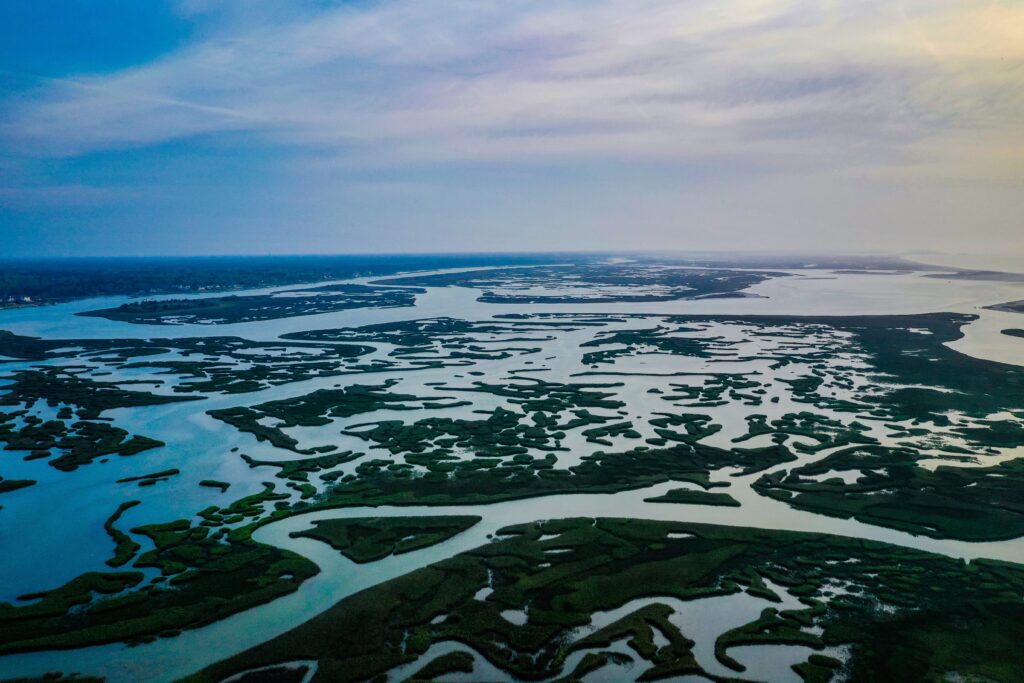
By MICHELLE DIFFENDERFER
President,
Lewis, Longman, and Walker, P.A.

and KATHERINE HUPP
Associate,
Lewis, Longman, and Walker, P.A.
On September 8, 2023, the Environmental Protection Agency and the U.S. Army Corps of Engineers (the agencies) published a final rule revising the definition of “waters of the United States” (WOTUS) in the agencies’ January 2023 WOTUS Rule. The Rule was issued to address the Supreme Court’s decision in Sackett v. EPA.
The Court in Sackett invalidated the agencies’ use of the significant nexus standard for determining jurisdiction over adjacent wetlands, significantly reducing the number of waters subject to Clean Water Act (CWA) permitting requirements. The Court held that the CWA extends only to adjacent wetlands that are “as a practical matter indistinguishable from waters of the United States,” meaning “that the adjacent [body of water constitutes] . . . ‘water[s] of the United States’ (i.e., a relatively permanent body of water connected to traditional interstate navigable waters); and . . . that the wetland has a continuous surface connection with that water, making it difficult to determine where the ‘water’ ends and the ‘wetland’ begins.” Slip Op. at 22 (quoting Justice Scalia’s plurality opinion in Rapanos v. United States).
The definition of WOTUS determines federal jurisdiction for 11 different CWA programs, including dredge and fill into wetlands, discharge and prevention of oil pollution, and reporting of hazardous substances. In Florida, which is by any definition a “wet” state, regulation of waterways and wetlands touches a broad segment of our population and our economy. As a result, Florida governments, tribes, farmers, ranchers, developers, businesses, environmental organizations, and individual homeowners will find themselves impacted by the new definition of WOTUS and how the agencies, including the Florida Department of Environmental Protection, interpret it.

Although the Court in Sackett did not directly rule on the agencies’ January 2023 WOTUS Rule, the agencies stated that they were modifying the Rule to address the Court’s opinion.
The Rule includes four revisions to the definition of WOTUS:
- Removal of the significant nexus standard from the Tributaries, Adjacent Wetlands, and Additional Waters sections.
- Removal of interstate wetlands from the Interstate Waters section.
- Removal of intrastate wetlands and streams from the Additional Waters section.
- Revised the definition of adjacent to mean having a continuous surface connection.
The remainder of the January 2023 WOTUS Rule, including the preamble and exclusions, were not changed; however, it is unclear whether the agency interpretations stated in the January Rule’s Preamble remain in effect.
Of particular interest, the existing exclusion for ditches was not modified by the Rule and therefore only excludes from jurisdiction those ditches excavated wholly in and draining only dry land that are not carrying a relatively permanent flow of water. This implies that ditches that do not meet that criteria could be considered jurisdictional—for example, as relatively permanent waters. However, Sackett limits jurisdiction based on relative permanence to “only those bodies of water ‘forming geographical features’ that are described in ordinary parlance as ‘streams, oceans, rivers, and lakes.’” (Slip Op. at 14).
The agencies have not addressed what constitutes a relatively permanent water under the new rule. In addition, the agencies did not address whether a continuous surface connection between a wetland and a jurisdictional water could be made by way of a ditch, pipe, culvert, or swale so that the wetland could be considered “indistinguishable” from that water. Notably, the January Rule Preamble states that a continuous surface connection may be established via a ditch, swale, pipe, or culvert and that canals and ditches could be considered relatively permanent waters.
In Florida, drainage and irrigation ditches and canals often connect wetlands to other jurisdictional waters. Therefore, how the agencies address canals and ditches going forward will be critical for determining jurisdiction on many projects.
Further complicating matters, in Florida, the majority of WOTUS have been assumed by the State for 404 permitting. The Florida program continues to rely on Florida’s wetland rules for defining jurisdiction and uses the 2020 WOTUS Rule upon an applicant’s request for exemption or treatment under the federal standard. It is not clear when Florida will update its program to address the new WOTUS Rule, further muddying the waters for us in Florida.
In a recent public webinar, the agencies stated that they will identify relatively permanent waters and adjacent wetlands consistent with Sackett, using tools, resources, relevant case law, and existing guidance and may address issues that arise in terms of rule implementation through approved jurisdictional determinations, CWA permits, notice and comment rulemaking, and guidance.
As stakeholders continue to raise questions about the Rule, it is likely that the Rule will be challenged. Meanwhile, legislation has been introduced in the House of Representatives which aims to redefine and broaden jurisdiction under the CWA in response to Sackett’s significant narrowing.
Stay tuned for further updates, which we hope will come soon. ●





















